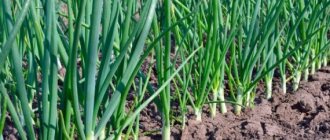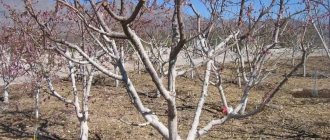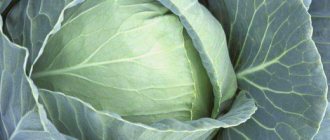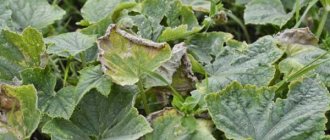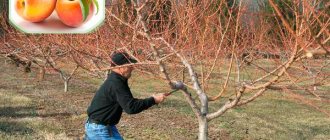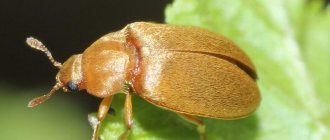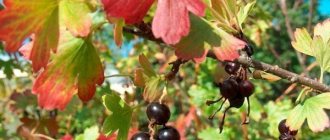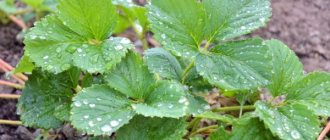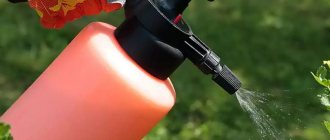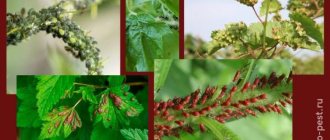Why is processing needed?
Soil is not only an important part of a vegetable garden, but also the key to a good, strong harvest.
Some summer residents complain about the low survival rate of plants, their slow development, and some crops do not grow at all in areas with poor and poor soil.
People attribute a series of failures to unfavorable soil, while their neighbors grow good-quality fruits and enjoy the lush flowering of shrubs and trees.
A huge role in successful farming is played by proper cultivation of the land, its enrichment with useful components, loosening - the article will suggest all ways to improve the soil.
How to cultivate land (soil) for the winter
Acidic soils - liming
Different soil types require different treatments in the fall. Acidic soils are no exception. High acidity of the soil will prevent you from getting a good harvest, since garden crops grow well only on neutral and slightly acidic soils. For this reason, it is necessary to persistently reduce its acidity on your own.
Liming will help with this. This method, in addition to its main mission, will help improve breathability and increase fertility.
For liming the following can be used:
- cement dust,
- wood ash,
- slaked lime,
- dolomite flour,
- peat ash.
It is impossible to name a specific application dose, since the composition, acidity of the soil and the amount of calcium contained in the liming agent are important.
Thanks to this procedure, clayey areas become much looser, while sandy areas begin to retain moisture better and become more viscous. In addition, liming leads to the fact that beneficial microorganisms begin to develop in the soil, which improve its fertile functions.
Autumn problems and preparation for tillage
A hardworking summer resident cultivates the soil on the site every year, because plants literally draw nutrients from its deep layers, which means that without proper work, the yield of vegetable crops next year will decrease.
There are many problems, for example, pests can seriously damage the garden and garden.
Signs of Problem Soil
In the spring, wintering insects spoil the first shoots, mole crickets spoil the rhizomes, slugs damage the berries, which leads to disappointment.
Signs of loss of fertility include:
- causeless withering of plants,
- modest harvest
- abundance of weeds.
Do not rush to enrich the soil immediately after harvesting berries and fruits; first, do other work on the site.
Works in autumn
The list of necessary activities includes the following manipulations:
- hilling of bushes;
- garbage collection;
- pruning trees and whitewashing trunks.
It is important to know that good protection against pests in the fall is to burn fallen leaves, damaged branches and old mulch away from the beds. This is where insects hide and successfully winter, so you shouldn’t litter the area.
Autumn pruning
Autumn pruning of fruit trees involves 2 methods: shortening and thinning. These events not only help the garden grow and bear fruit, but also protect the trees from branches broken under the weight of snow. Pruning the garden in the fall also has a sanitary purpose. Dead or diseased branches must be removed to maintain the health of the entire tree or shrub.
Thinning the crown will provide the plant with good ventilation and the opportunity to receive enough ultraviolet radiation. Young trees are thinned out every year until their crown is fully formed. To do this, only a few main branches are left on the trunk, cutting off all the young shoots. After thinning, the seedlings are watered and fed with mineral fertilizers so that the plant quickly recovers from stress. The crown of mature trees is thinned out no more than once every 2 years. When pruning, it is necessary to remove all abnormally growing shoots.
They resort to shortening the branches so that the crown of the trees has the correct shape and grows in the right direction. The branches are shortened to a bud, which will ensure the shoot grows in the desired direction. Agronomists recommend forming the crown of trees so that their branches are parallel to the ground. This makes harvesting and further care of the plant easier.
All diseased and lichen-covered branches must be removed at the end of September or October. It is worth pruning them in the autumn, since diseased shoots are sensitive to cold. This can affect the health of the entire tree. After pruning, sections whose diameter exceeds 10 mm are treated with garden varnish.
Autumn pruning of trees is carried out only in regions with a temperate climate. It is not recommended to carry it out in cold zones: the trees do not have time to recover before the onset of winter, and the bark on the cuts freezes. This subsequently leads to drying out and death of the entire tree.
Digging the soil
Heavy clay soil especially needs digging; it is quite difficult to cultivate. But such work has a positive effect on this type of soil - voids are formed in it, which means there will be more oxygen to feed the plants, and the harvest will be better.
In the process of autumn digging, parasites are destroyed, sleeping pupae of pests die from the influx of cold air, and the number of weeds on the site is reduced.
It is necessary to loosen the soil before the beginning of October, before prolonged rains and frosts begin; the optimal digging depth is 15 cm.
Light and treated soil
It is not recommended to dig it up often, as its structure may become dispersed and the soil will become too loose and prone to the growth of harmful microorganisms. Also, mineral elements are easily washed out of crumbly soil, and its physical qualities deteriorate.
Clay areas
On the contrary, the structure of clayey areas needs to be improved by adding granular sand to the ground - up to 5 kg per square meter. It is allowed to add peat chips to it.
It has been proven that heavy soil should be dug deeply and flavored with organic matter, but large clods of earth should not be broken up.
Under the influence of frost, the blocks will disintegrate, the soil will become looser and more pliable, while loam needs more careful plowing.
Optimal soil structure
One of the most important activities is soil cultivation. Processing methods are the subject of much heated debate. Some consider the old-fashioned system with reservoir turnover to be correct. Others call it, no less, a crime against the land-nurse. They cite the example of the American aborigines, who grew corn and potatoes using only a digging stick and a hoe. To understand what's what, you need to know what properties the land on our site has, and what we would like to make it. Plants, as we know, have different needs, but most vegetables perform best in light, nutritious soils with good structure (plenty of pores that retain water and oxygen, with particles that absorb and retain nutrients), slightly acidic or similar to a neutral reaction (pH from 6 to 7). This is ideal, but in practice it is not so easy to achieve.
Fertilizer application
Once the soil has been dug up, it’s time to start fertilizing. This is an important event in autumn care and preparation of the land for winter cold.
Manure
Since ancient times, manure has been a widespread and effective remedy; gardeners willingly use it in different parts of the world, and you can buy mullein both on the farm and in a special store for gardeners.
Fresh manure is applied to empty beds in the fall in order to prepare the soil for future plantings; this promotes the full growth and development of cucumbers, celery, cabbage, and pumpkin.
In October, the rotted fertilizer is saturated with moisture, mixed with the soil and is perfect for feeding perennial fruit and berry crops.
And it is also allowed to treat the soil with the following means:
- peat;
- ash;
- urea.
Peat
rich in useful substances, it increases the soil's resistance to pests, in addition, it loosens the soil, the main thing is to distribute the additive evenly.
Use 4 to 5 liters of product per square meter, because peat will perfectly replace manure in the absence of the latter.
Wood ash
Rich in potassium, it must be added to heavy clay soil. This product fights pests, and is especially effective against melon aphids.
- pour 300 g of ash with 1 liter of boiling water,
- boil the solution for about 15 minutes,
- pour it into a bucket of water.
Irrigate the soil around the bushes with this solution in order to get rid of not only aphids, but also other pests.
Urea
It saves nitrogen in the soil, it can be used in parallel with iron sulfate at the rate of 100 g of the mixture for each square meter of beds.
Weeds and pests
Weed control
Our areas differ greatly in the number and species composition of weeds. And we need to decide how to overcome them. Which ones you dig up with a pitchfork, which ones you just cut down and don’t let the seeds scatter. And there will be fewer of them after digging. A separate discussion is about areas where there are a lot of root-sprouting perennial plants, such as creeping wheatgrass and cowgrass. In the fight against them, a shovel is a bad helper. When digging, we will inevitably cut the rhizome into separate pieces with buds, that is, we unwittingly cut the weed, achieving the opposite of the expected effect. Here it is better to use a pitchfork and a rake, removing and “combing” rhizomes from the ground, which can stretch meters deep. Both corn and wheatgrass are difficult to eradicate, and the damage they cause is considerable. They not only oppress cultivated plants, but also provide shelter and food for malicious pests. Wheatgrass is a favorite food and bait for wireworms. The whitefly, the scourge of greenhouse plants, feeds and reproduces on the sap. It also causes harm in open ground, but in a greenhouse it has the best conditions for reproduction, and being numerous, it can not only parasitize, but also destroy cucumbers, tomatoes and flowers.
It would be nice to think about our enemies and allies from the animal world. If pests do not cause us much trouble, restrained by natural conditions, it is better to reduce our intervention to a minimum. If hordes of slugs, wireworms, Colorado potato beetles, May beetles, mice and other harmful living creatures have settled down for the winter in our garden, it would be good to disturb it with late autumn digging. Beetles and larvae that have already lost their mobility will freeze when brought to the surface, and disturbed mice will leave their homes in search of a quiet “abode.”
Mulching
If in a greenhouse you can leave the soil in its original form, then outside it is recommended to mulch the soil so that it additionally absorbs organic matter.
As a covering, gardeners use pine needles and sawdust, hay, pieces of bark, and shredded paper.
The thickness of the mulch ranges from 5 to 7 cm, but it is important to know that you should not be overzealous with the use of pine needles - this can lead to an increase in soil acidity.
Green manure
There is also green fertilizer given to man by nature itself. It enriches the soil with nitrogen and inhibits the development of weeds, and it is very easy to stock up on it.
Green manures include:
- legumes,
- mustard and clover,
- oats, rye,
- sunflower, buckwheat.
At the same time, they are planted in the fall so that the greenery forms before frost and by spring goes into the soil, becoming fertilizer.
Treatment nuances depending on soil type
To correct the structure of the fertile layer, the area is treated using sand, peat, leaf humus and other compounds depending on the type of soil:
- in heavy clayey areas it is necessary to improve permeability, as there is difficult drainage and poor aeration of the strata. To do this, river sand should be added along with organic matter in the form of compost, humus, peat and ash. For example, you can supplement the planting soil with humus and sand at the rate of 10 kg/m²;
- sandy soils are not able to retain moisture, vegetation suffers from nutrient deficiency. It is necessary to enrich the composition with organic matter in the form of rotted sawdust at the rate of a bucket/m², humus at 4-5 kg and compost at 5-6 kg per m².
To improve pH, dolomite flour, lime, and wood ash are added. It is important to take into account that peat and pine mulch are in demand for enriching the soil with useful substances; they ensure the permeability of the substrate, while also helping to increase acidity.
Cautions for summer residents
Some gardeners want to save the future harvest from disease and spill boiling water on the soil.
This method is considered effective against pests and infections, but it is not without drawbacks, because along with pathogens, beneficial microorganisms also die, so it is better to refrain from using boiling water.
In winter, cover the beds in the greenhouse with fresh snow, its layer should be about 20 cm. The snow cover will protect the soil from freezing, and in the spring it will be moist.
Do not delay cultivating the land in the fall against pests and diseases; come to your summer cottage in September and October after harvesting in order to make your work easier in the spring.
What do you plant in the garden in the fall before winter?
The traditional crop for autumn planting is onion sets. It is recommended to plant it before the first hard frost so that the plants have time to take root. The seed material is chosen small, no more than 1 cm in diameter. The depth of planting onions before winter is minimal - about 1 cm. In the first half of October, garlic is planted before winter. Unlike onions, garlic cloves are buried 5-10 cm into the ground so that the plant does not freeze. After planting, the bed is mulched with fallen leaves, pine needles or covered with spruce branches.
Spicy plants get along well in one bed and are suitable for autumn planting. Dill, cilantro and parsley can be planted after the first overnight frost. A bed with sown furrows is covered with slightly frozen soil and mulched.
For autumn planting, you can use lettuce. To ensure that its greens appear on the table as early as possible, the seeds are sown in a greenhouse. At the same time, they do not require special covering material or mulching.
In regions with cold and long winters, beets are planted before winter. Cold-resistant varieties are suitable for such planting. Winter stratification ensures early spring shoots. If not all seeds have overwintered, beets can be replanted in the spring.
Agrotechnical method
The agrotechnical method of soil disinfection is a set of procedures, the implementation of which helps to get rid of pathogens.
In order for the soil to remain fertile for as long as possible and produce high yields, it is necessary to properly organize crop rotation.
Green manure is used - crops that are planted not to produce a harvest, but to improve the condition of the soil. It could be mustard, oats. They are sown during harvesting and wait until the seedlings grow. The seeds should not ripen. Plants are mowed and embedded in the soil.
In order to disinfect the soil, it is laid in a stack about 3 m wide and up to 1.5 m high. During the laying process, it is filled with feces or liquid manure. Acidic soil is limed by adding about 4 kg of lime per 1 m2. Once a year the pile is shoveled. In two to three years, weed seeds and bacteria mostly die. In order to get rid of white rot and clubroot, you need to wait 4 years. The method is intended for processing a small amount of soil.
Thermal disinfection is carried out for soil intended for growing seedlings.
- You can pour boiling water over it, then dry it. But it will take longer than steam disinfection for an hour.
- In greenhouses, the soil is dug up with rotary machines to a depth of 15 to 50 cm, covered with heat-resistant film, and steam is released using a steam generator. This method is used in large greenhouse farms.
- Processing time from 10 min. (weed seeds and anaerobic parasites), up to 40 minutes (nematodes and anaerobic fungi).
- After such treatment, almost all microorganisms in the soil, including beneficial ones, die. Soil salinity increases.
- To reduce the concentration of salts, the area is spilled with plenty of water. To repopulate the soil with beneficial microflora, manure is applied.
Recently, organic farming methods have become popular. Disinfection is carried out by adjusting the ratio of beneficial and pathogenic microorganisms. This is a whole complex of activities: sowing green manure, adding high-quality compost obtained in the usual way or as a result of using the Shine product.
To dig or not to dig in the fall?
Yes
- the need to introduce lime materials and organic fertilizers with a low degree of decomposition, including green manure;
- high infestation of perennial weeds;
- heavy, compacted soils;
- abundance of wintering pests;
- the need for snow retention;
- humid climate with long springs, slow warming and ripening of the soil.
No
- sloping area;
- area prone to flooding;
- light soils susceptible to erosion.
Why prepare the beds in advance?
This question is relevant for those who have just begun to master gardening. Inexperienced summer residents are confident that all work related to preparing beds can be carried out in the spring. As mentioned above, not every fertilizer has time to be converted into a form accessible to crops. Moreover, in the spring the summer resident has so much trouble that he simply may not have time to complete all the work.
Liming acidic soil
If you take the time to prepare your beds in the fall, you can save yourself a lot of hassle in the spring. After winter is over, you just need to loosen the beds, dig holes for seedlings or furrows for planting material and begin the usual procedures associated with planting crops.
Related article:
How I managed to get rid of woodlice in the garden: personal experience
How to get rid of slugs
Slugs are a real problem for gardeners. These pests eat everything that grows in the garden. They especially love tomatoes, lettuce, beans, and cabbage. Slugs are difficult to get rid of in one go. Because they feed at night, and during the day they hide under stones and boards. During daylight hours, their presence can be guessed by their mucus trail.
Traps
Slugs lay their young in fertilizer or moist soil. To catch them, you should place pieces of thick cardboard or boards around the plants.
Many farmers lay out circles of raw potatoes. In the morning they will be under these shelters, from where they can be easily removed and placed in a plastic container. Then put the container in the freezer for three hours. When they are frozen, simply shake them out onto the compost.
Slugs love alcohol. Place saucers or plastic bottles of dark beer cut in half around the garden. You can mix water with yeast to replace beer. At dawn or dusk, collect these pests. Ethanol works best among alcohol. Mix it in equal parts with water and pour it into the traps.
Folk remedies
Slugs don't like mint, so plant it around your garden. They do not tolerate oak leaves. Make mulch from oak leaves. Place them around the plants.
These pests cannot tolerate alkaline soil. Slaked lime, slag, and sand are especially useful against slugs. If you sprinkle lime, mustard, and finely crushed eggshells around the beds or flower beds, it will be difficult for them to reach the plants. Scattered ash around bushes is also unpleasant for this pest.
They also do not like it when the approaches to plants are sprinkled with dolomite flour. But cornmeal is especially poisonous for them. Pour flour into jars and place them on their sides so that the shellfish can crawl into them. The next morning, collect dead insects.
Install a copper wire fence around the beds. These pests cannot tolerate copper.
Farmers attract hedgehogs, frogs to their plot by setting up a pond for them, as well as various birds.
Slugs often breed in compost heaps. After sunset in dry weather, sprinkle the pile with salt. Soda is also destructive for them, but only soda ash. Large accumulations of these mollusks can be sprinkled with soda ash or sprayed with a solution of ammonia (6 tablespoons) onto a bucket of water every 7 days.
Chemical preparations
If all else fails, use Ulicide. This drug is harmless to people and animals. One treatment at a rate of 3-5 g/kW is sufficient. m, and the slugs will disappear, and the remains will be processed by microorganisms living in the ground.

